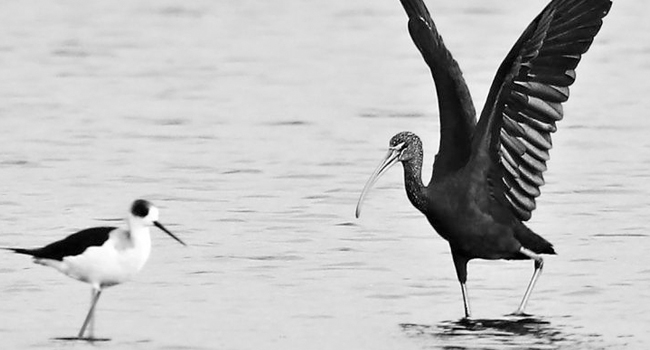DENR Urges Public To Protect Western Visayan Wetlands
DENR – The Department of Environment and Natural Resources (DENR) in Western Visayas urged the public to preserve the wetlands.

This is in order to help in the preservation of areas where migratory birds thrive, says Environment Assistant Regional Director Livino Duran, according to a post from Panay News.
“We have continuous monitoring of our wetlands because other migratory birds already become residents of Western Visayas,”
Among the latest migratory birds documented include the Glossy Ibis (Scientific name: Plegadis falcinellus) in the wetlands of Barangay Hinactacan, La Paz district on the 29th of November.
The ibis was captured by the camera lens of Rachel Casio of the environment department’s Conservation and Development Division.
“After three years, another first sighting of a rarely seen migratory bird in the country was recorded in the Hinactacan wetlands,”
The said ibis is a wading bird with a global range and is the most widespread of all ibis species. They were, however, rarely observed in the Philippines.
The ibis seem dark at a distance but have stunning colors of deep maroon, emerald, bronze, and violet upon closer look.
The species have long-legged with long bills, which makes them easily mistaken as Eastern curlew. The bird forage close together in open fresh marshes but can also be seen in brackish and saltwater marshes, mudflats, mangrove swamps, wet agricultural fields, lakes, shallow rivers, and pond edges.
The Glossy ibis is also known for its courtship, which it it bows to one another, preening each other and touching their bills together.
Based on the report, Duran said that some migratory birds have opted to stay due to them already adopted the habitat, as well as sufficient food there.
Public awareness is already high in the area, hence, the birds already mingle within the community, he added.
“Most of our wetlands are near communities. If they (migratory birds) are left unharmed, more or less they will just adapt to the situation,”
What do you think of this report? How will you react to this? Let us know more about it in the comments below.
READ ALSO:
Check out our latest news at philnews.ph or in our following social media pages
Facebook: /PhilNews
Twitter: @PhilNews247
Instagram: @philnewsph
